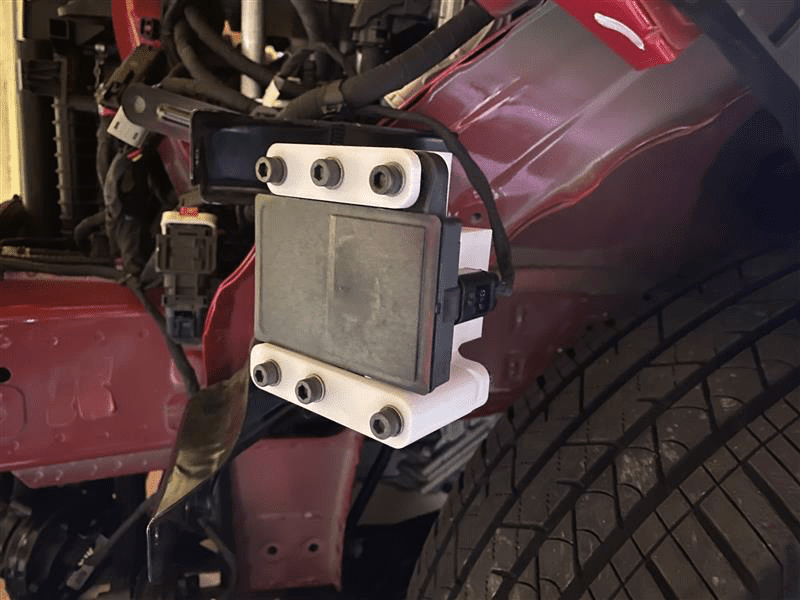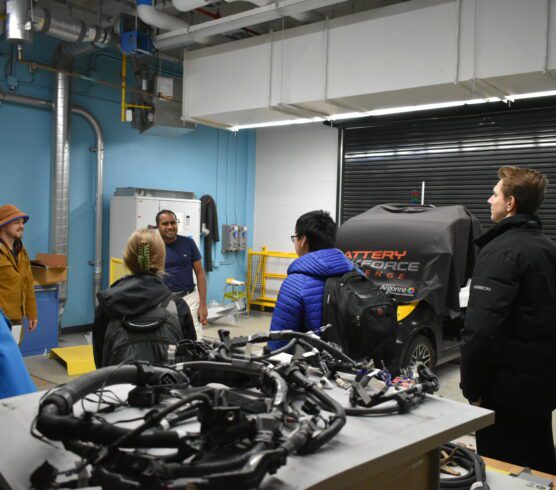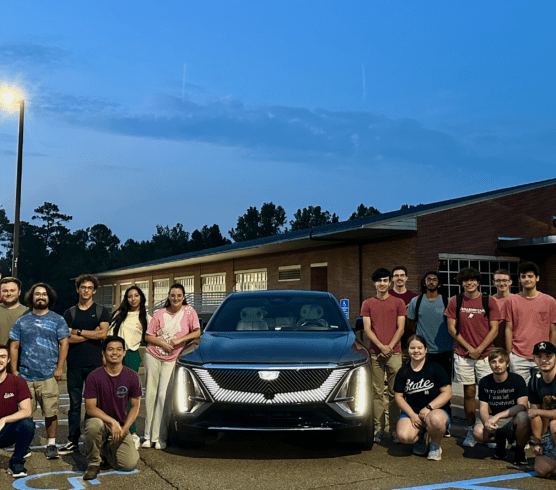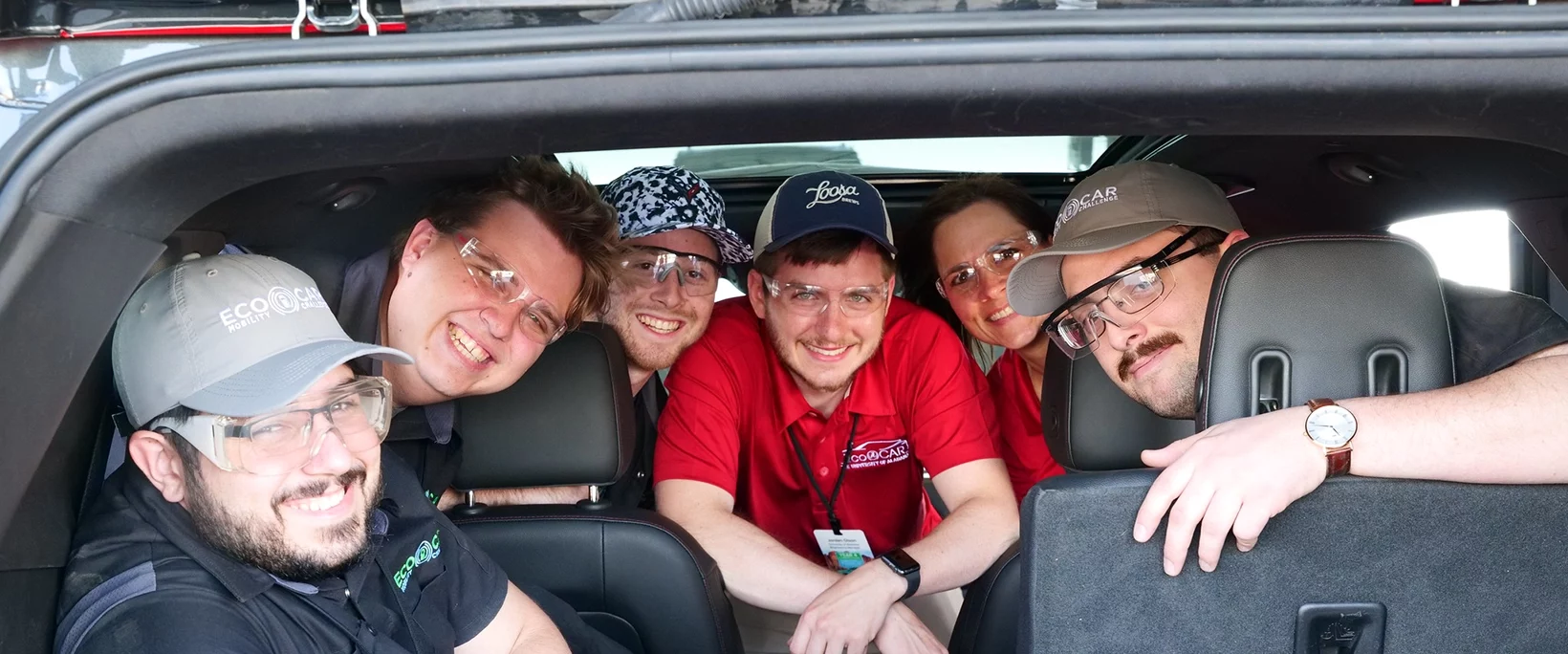New to Advanced Vehicle Technology Competitions (AVTCs), teams have been tasked with implementing connected and automated technologies into their Chevrolet Blazer to help achieve Level 2 autonomy by the end of Year 4. Level 2 autonomy means the redesigned Blazer will be capable of independently controlling the vehicle’s speed and steering in ideal conditions.
The Connected and Automated Vehicles (CAVs) team, one of the five sub-teams within the Ohio State EcoCAR Mobility Challenge program, is dedicated to working with a suite of radars and cameras to help achieve this Level 2 autonomy. The sensors and cameras, like the Aptiv Medium-Range Radar seen below, are used to take information from the environment outside of the vehicle, which is then processed into meaningful data used to help implement these autonomous features.

The majority of work being done by the CAVs team is centered around the Electrical and Computer Engineering (ECE) domain, which is a crucial aspect of the automotive industry as the number of electrified and autonomous vehicles increase. Dr. Giorgio Rizzoni, the director of the Center for Automotive Research and an ECE Professor at Ohio State University, notes:
“The automotive industry continues to evolve rapidly to adopt new technologies that will enhance vehicle safety, energy efficiency, and convenience. In addition to the well-established push towards electrification of vehicle propulsion systems, the development of connected and automated vehicle functions has seen significant growth in the past several years, with the commercial deployment of L3 vehicles now in sight.
In this rapidly changing landscape, the role of electrical and computer engineers is ever more critical, as expertise ranging from communication systems to cybersecurity, and from power electronics to environmental sensing technologies is in high demand in the automotive industry. ECE students who are seeking challenges and opportunities will find that this an exciting time to be an innovator in support of connected, automated and electric mobility.”
Every year the CAVs sub-team has a multitude of challenges and deliverables, and this year is no different. While COVID-19 has limited aspects of the semester, from many team members working from home to limited vehicle access, the team has adapted and made a lot of progress. This semester alone, the sub-team improved sensor fusion performance, designed a new algorithm for lane keep automation, and finalized the design of the real time optimizer, which helps determine what the most fuel-efficient speed is.


This spring, the team plans to take all the individual projects from last semester and integrate them into the vehicle to achieve the desired autonomous features. Once integrated, the team will put the CAVs systems through rigorous testing to confirm functionality and robustness. The team’s goal for next semester includes testing the CAVs system for at least 500 miles, with most of the testing at speeds of 70 miles per hour and above.
In addition to the technical work, the team plans to continue developing unique solutions to overcome all the challenges this year has brought. Whether it’s by physically driving the car or working virtually, the CAVs team plans to continue driving towards success to meet competition deliverables and team-developed goals.




